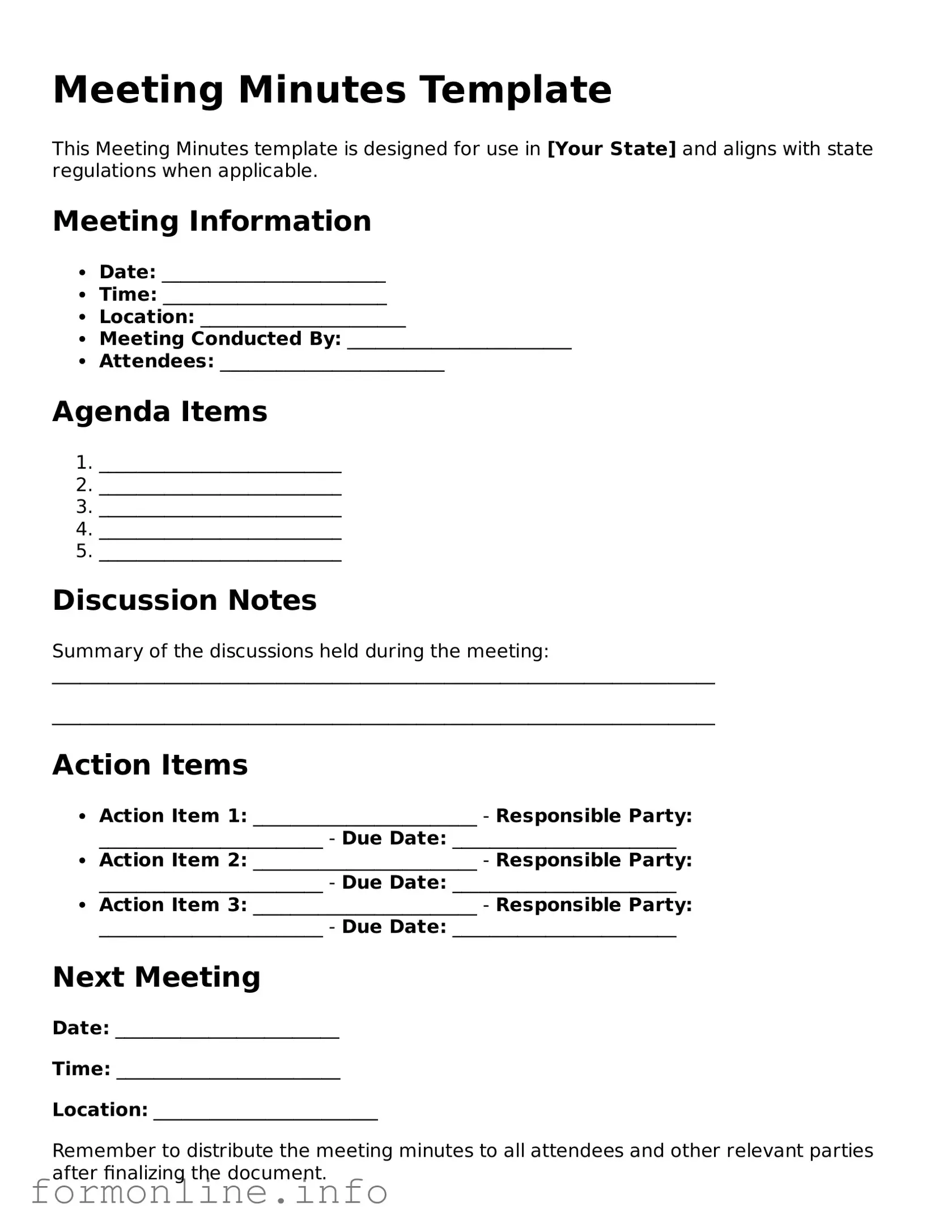Meeting agendas are similar to meeting minutes in that they both serve to outline the structure and content of a meeting. An agenda is typically created prior to the meeting and lists the topics to be discussed, the order in which they will be addressed, and the individuals responsible for each item. While meeting minutes capture what actually occurred during the meeting, including decisions made and action items assigned, the agenda sets the stage for those discussions. Both documents are essential for effective communication and organization within a team or organization.
Action item lists are another document closely related to meeting minutes. After a meeting, action items are often extracted from the minutes to create a focused list of tasks that need to be completed. This list specifies who is responsible for each task and the deadlines for completion. While meeting minutes provide a comprehensive record of discussions and decisions, action item lists distill that information into actionable steps, making it easier for participants to follow up on their responsibilities.
Project status reports share similarities with meeting minutes in that they both provide updates on progress and decisions. A project status report typically summarizes the current state of a project, including completed tasks, ongoing challenges, and next steps. While meeting minutes document specific discussions and decisions made during a meeting, status reports may include information from multiple meetings or ongoing work, offering a broader view of the project’s trajectory.
Another important document to consider is the Vehicle Release of Liability form. This form is crucial for sellers as it ensures that they are no longer held liable for any issues that may arise after the sale of a vehicle. By utilizing a comprehensive Vehicle Release of Liability document, sellers can protect themselves legally and facilitate a smoother transfer of ownership, thereby providing peace of mind during the selling process.
Meeting summaries also resemble meeting minutes, as both documents aim to capture the essence of a meeting. However, meeting summaries are often more concise than minutes and may focus on the key takeaways rather than providing a detailed account of every discussion. Summaries are useful for stakeholders who need a quick overview without delving into the minutiae of the meeting, while minutes serve as a more comprehensive record for those who need detailed information.
Conference notes can be compared to meeting minutes as they both document discussions and insights from gatherings. Conference notes are typically taken during larger events, such as seminars or workshops, and may include highlights from various sessions, key points made by speakers, and reflections from attendees. Like meeting minutes, these notes help participants retain information and share insights with others who were not present, though conference notes may cover a broader range of topics and perspectives.
Decision logs are another document that aligns with meeting minutes. These logs focus specifically on the decisions made during meetings, outlining what was decided, who made the decision, and any relevant context. While meeting minutes provide a more comprehensive account of discussions and decisions, decision logs distill that information into a straightforward format that can be easily referenced for future clarity and accountability.
Feedback forms, while not directly documenting meetings, share a connection with meeting minutes in that they both facilitate communication and improvement. Feedback forms are often distributed after meetings to gather participants' thoughts on the effectiveness of the meeting, the clarity of discussions, and any areas for improvement. The insights gained from feedback forms can inform future meetings, just as the minutes from past meetings can guide ongoing discussions and decision-making.
Lastly, training materials can be viewed as similar to meeting minutes in that they provide information intended to educate participants. Training materials may include notes from training sessions, key concepts discussed, and resources for further learning. While meeting minutes focus on documenting discussions and decisions from meetings, training materials aim to equip participants with knowledge and skills, serving as a reference for future application.
